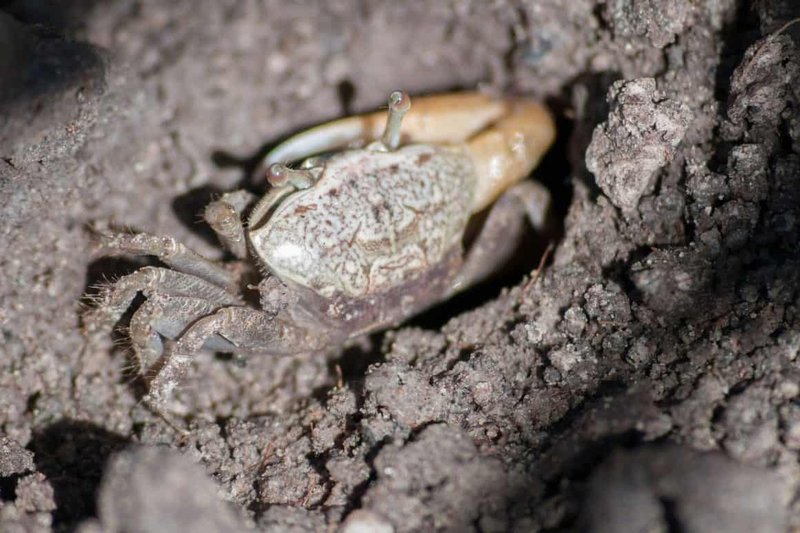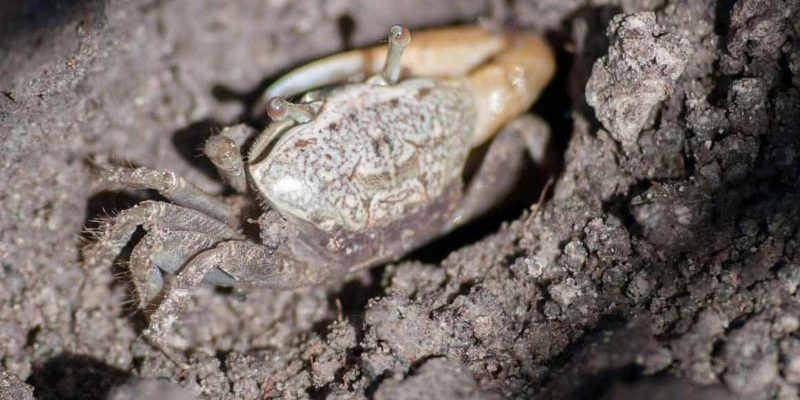
Burrowing predators, like certain species of fish or invertebrates, have a knack for digging into substrates, hiding, and sometimes even attacking your prized fish. You might think you’ve set up a cozy home for your fish, but suddenly, their behavior changes, or you start noticing odd things in your tank. Let’s dive into the signs that could indicate your tank has a visitor you didn’t invite.
A burrowing predator in your aquarium can refer to various creatures—some harmless, some not so much. In most cases, these are species that make their homes in the substrate or gravel of your tank. Think of them as the underground dwellers of your aquatic world, similar to how ants create tunnels beneath your lawn.
Common burrowing predators include certain types of **catfish**, **cichlids**, and **invertebrates** like **crabs** or **snails**. Some of these creatures are not inherently harmful, but when they invade a space meant for other fish, they can cause quite a stir.
These predators dig and hide, sometimes making it difficult to spot them. This behavior can lead to stress among your fish, so it’s essential to pay attention to the signs of their presence.
Unusual Fish Behavior
One of the most telling signs of a burrowing predator is a change in your fish’s behavior. If your usually playful fish are suddenly hiding or staying close to the surface, it might be a red flag. Think of it like your home team suddenly becoming timid during a game—they might sense that something is off.
Here are some behaviors to watch for:
- Hiding Frequent: If your fish are suddenly spending most of their time hiding, they could be stressed by a predator lurking in the substrate.
- Aggression: Notice if your usually friendly fish are acting aggressively toward each other. This can happen if they’re feeling threatened by an unseen creature.
- Loss of Appetite: If your fish aren’t eating like they usually do, it might be a sign that they’re stressed or fearful.
If you see these behaviors, it’s time to take a closer look at your tank setup.
Physical Signs in the Substrate
Sometimes, the signs are more physical. Have you noticed any strange disturbances in the substrate? You might find small holes or trenches where the substrate has been pushed aside. This is akin to seeing little dirt mounds in your yard indicating a critter is digging around.
Some physical signs include:
- Holes or Trenches: Small holes or areas where the substrate looks uneven can indicate burrowing activity.
- Uneven Sand or Gravel: If you have a sand substrate, you might see piles forming or areas that look freshly disturbed.
- Debris Displacement: Look for any debris or uneaten food that seems unusually displaced or rearranged.
If you notice these signs, it’s a clear indicator that there’s something digging around in your aquarium.
Signs of Damage to Your Fish
If you suspect a burrowing predator, keep an eye out for any physical damage to your fish. This could be the most alarming sign. Much like how an unexpected visitor can upset the harmony in your home, a predator can cause real harm to your aquatic pets.
Several types of damage can occur:
- Scratches or Bites: Inspect your fish for any visible wounds. If they have scratches or bites, this is a strong indication of a predator.
- Missing Fins or Scales: Look for any missing fins or scales, which might suggest that a burrowing predator has made an attempt to attack or harass your fish.
- Increased Stress Signs: Look for signs of stress—like rapid gill movement or erratic swimming—as these can indicate distress caused by a predator.
If you see any of these signs, it’s crucial to act quickly to protect your fish.
Tank Mates Acting Oddly
Have you noticed unusual interactions among your fish? If some fish are constantly darting away or hiding while others seem oblivious, this is worth paying attention to. It’s like noticing that one of your friends keeps looking over their shoulder, hinting that something’s not quite right.
You may observe:
- Schooling Behavior: Fish that typically stay in groups may start to disperse, indicating fear.
- Chasing or Nipping: If fish are chasing or nibbling at each other more than usual, it could show panic or fear of an unseen predator.
- Uncharacteristic Quietness: While some fish might be more vocal, if the chatter suddenly dies down, it could mean they are feeling threatened.
Keep a close watch; unusual interactions can help you spot a problem before it escalates.
Checking Your Tank’s Environment
Sometimes the issue lies in how you’ve set up your tank. The environment is key for your fish’s well-being, so if it’s not right, it may attract unwanted predators. Think of it as checking the locks on your doors to ensure they’ll keep out any trouble.
Here’s what to consider:
- Substrate Type: Some substrates are more prone to harboring burrowing creatures. If you’re using sand, it could be a hiding spot for many types of critters.
- Tank Size: Overcrowded tanks can stress fish, leading them to seek cover from potential threats.
- Water Quality: Poor water conditions can stress your fish and make them more vulnerable to predators.
Regular maintenance and monitoring can keep your environment healthy and comfortable for your fish.
How to Handle a Burrowing Predator
If you’ve identified signs of a burrowing predator, it’s important to take action. Here’s how you can address the situation before it escalates further.
First, carefully **inspect your tank**. Use a net to gently probe the substrate and see if you can identify the predator. If you catch it, you may need to decide what to do with it—relocation or rehoming are options.
Consider also:
- Rearranging the Tank: Sometimes changing the layout disrupts predators, making it harder for them to settle into their burrows.
- Adding More Hiding Spots: Providing hiding spots for your stressed fish can give them safe spaces to retreat.
- Seek Help: If you’re unsure, consulting a local aquarium expert can provide insights specific to your situation.
Taking these steps can help restore peace to your aquarium and ensure your fish have a safe environment.
In the end, being aware of the signs that your tank has a burrowing predator is the first step in keeping your aquatic community healthy. By observing fish behavior, checking the substrate, and ensuring a balanced environment, you can effectively protect your fish and maintain the tranquil haven you’ve created. Remember, a little vigilance can go a long way in keeping your underwater family safe and happy.

